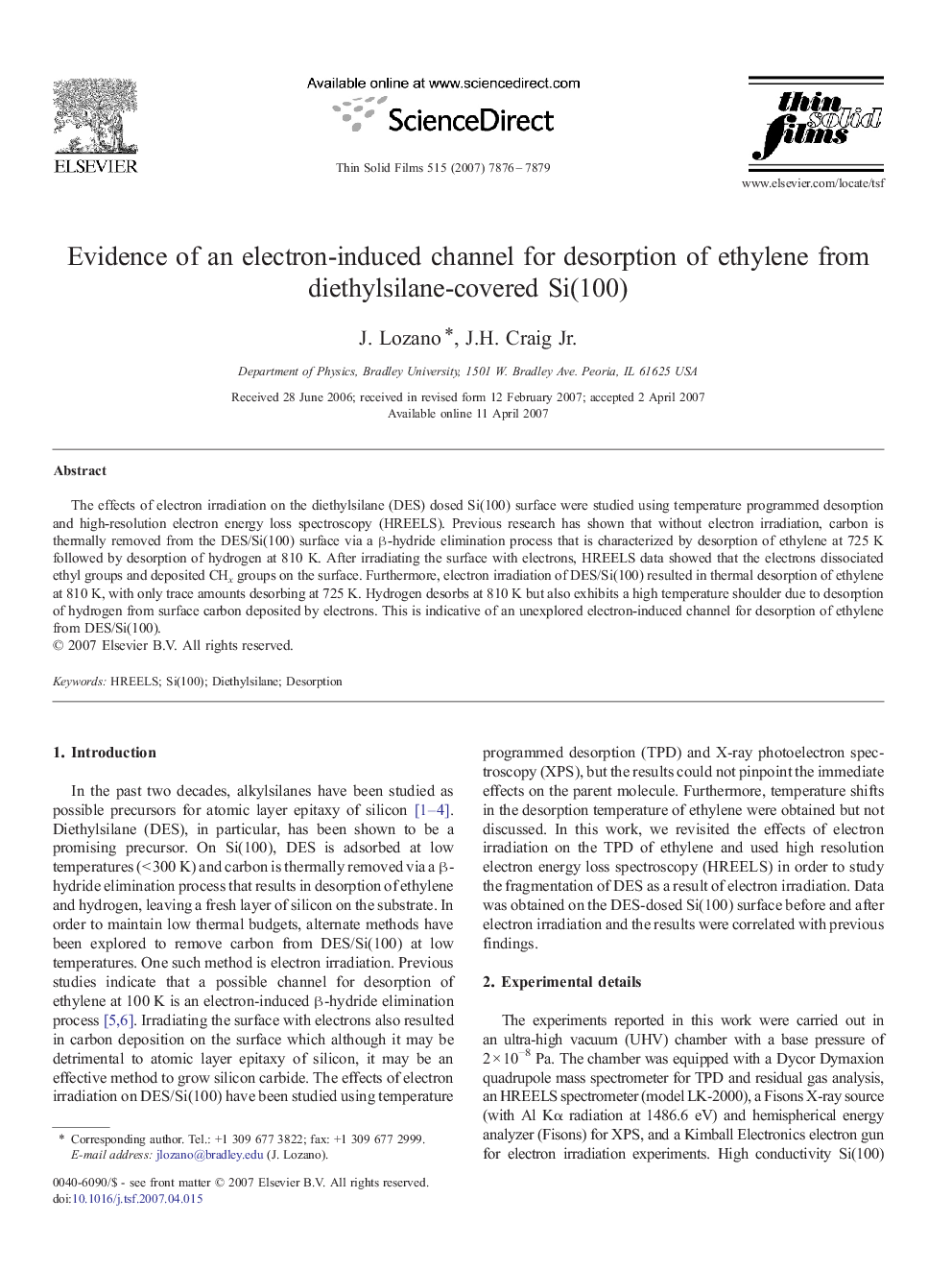| Article ID | Journal | Published Year | Pages | File Type |
|---|---|---|---|---|
| 1672321 | Thin Solid Films | 2007 | 4 Pages |
Abstract
The effects of electron irradiation on the diethylsilane (DES) dosed Si(100) surface were studied using temperature programmed desorption and high-resolution electron energy loss spectroscopy (HREELS). Previous research has shown that without electron irradiation, carbon is thermally removed from the DES/Si(100) surface via a β-hydride elimination process that is characterized by desorption of ethylene at 725 K followed by desorption of hydrogen at 810 K. After irradiating the surface with electrons, HREELS data showed that the electrons dissociated ethyl groups and deposited CHx groups on the surface. Furthermore, electron irradiation of DES/Si(100) resulted in thermal desorption of ethylene at 810 K, with only trace amounts desorbing at 725 K. Hydrogen desorbs at 810 K but also exhibits a high temperature shoulder due to desorption of hydrogen from surface carbon deposited by electrons. This is indicative of an unexplored electron-induced channel for desorption of ethylene from DES/Si(100).
Keywords
Related Topics
Physical Sciences and Engineering
Materials Science
Nanotechnology
Authors
J. Lozano, J.H. Jr.,
